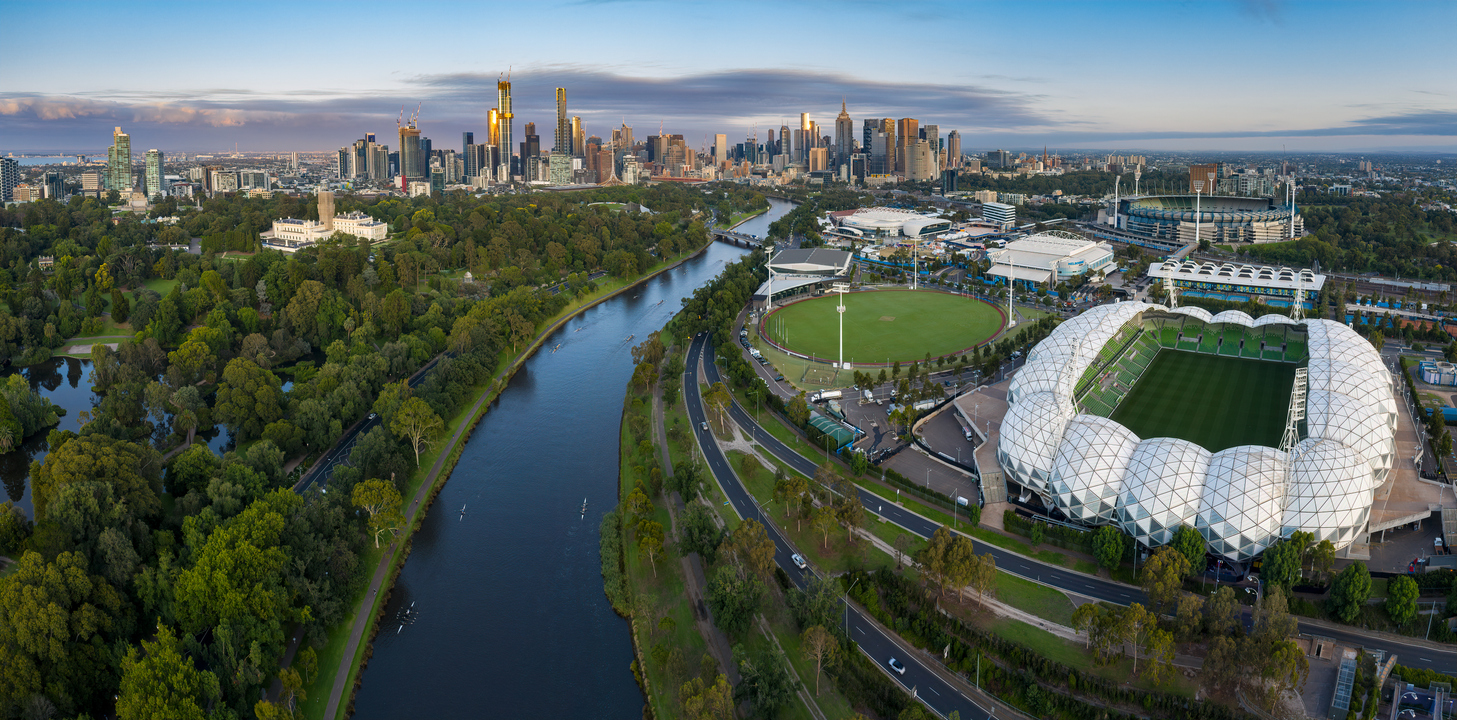The golden decade of hosting major events in Australia commenced in 2022. Between 2022 and 2032, Australia will host major sporting events of Major Championship, World Cup or World Championship status in sports ranging from cricket, football and rugby union, to road cycling and cross country running. Regional Victoria will host the 2026 Commonwealth Games, with the golden decade culminating with the Brisbane 2032 Olympic Games.
The award of a right to host an international sporting event is made by an international sporting body to a Local Organising Committee (LOC) under terms detailed in a Host City Contract or equivalent Event Organisation Agreement.
Moulis Legal Partner Director, Shaun Creighton, was a Director of the LOC for the recently conducted 2023 World Cross Country Championships in Bathurst, and performed the role of rights protection manager for that event. In this article, he provides an overview of laws a LOC can utilise as part of a rights protection program.
Rights protection programs – which laws can assist in Australia?
A Host City Contract invariably contains commercial and rights protection provisions. The rights protection provisions place obligations on a LOC to put in place mechanisms to limit ambush marketing activities. What those mechanisms are will depend on the size of the event, which in turn affects whether event specific legislation can be utilised.
A rights protection program is developed to protect the interests of commercial affiliates of the international sporting body and the LOC including sponsors, broadcasters and official licensees. The enforcement of a rights protection program is achieved through a mix of laws which are available to any person, and other event specific laws which are drafted to provide mechanisms to prevent ambush marketing. This legislation depends on the type and size of the event. Not surprisingly, at the top of the podium for legislation which enables enforcement of a rights protection program is the Olympic Games.
A robust rights protection program for major events includes:
- Securing relevant intellectual property rights in a range of jurisdictions.
- Relying on intellectual property and right of association laws as enforcement mechanisms.
- Utilising any event specific legislation.
- Contractual provisions with suppliers of goods / services which specifically address ambush marketing activities and rights of association.
- Contractual provisions with venue owners containing “clean venue” requirements during specified dates.
- A co-ordinated approach with other relevant stakeholders, including broadcasters and other sporting organisations where relevant.
- Practical measures aimed at limiting an ability for ambush marketers to undertake ambush marketing activities at or near competition venues.
Intellectual property rights for an event in Australia can be granted under one or more of the follows laws, as relevant:
- Copyright Act 1968 (Cth) for artwork, photographs, marketing materials, video content, broadcasts and written promotional materials.
- Trade Marks Act 1995 (Cth) for logos, words and other signs used as a brand.
- Designs Act 2003 (Cth) for the visually distinctive shape or appearance of a product, such as certain types of equipment or merchandise
In addition to intellectual property laws referred to above, the Australian Consumer Law (as contained as Schedule 2 of the Competition and Consumer Act 2010) (the ACL) enables an event organiser to prevent a person from engaging in misleading or deceptive conduct (section 18) or misrepresenting an association, affiliation, approval or sponsorship (section 29). In Australia, sections 18 and 29 of the ACL are powerful tools to prevent ambush marketing. Many of the principles contained in section 29 of the ACL are expanded on in event specific legislation aimed at prevention of ambush marketing.
In Australia, the investment required to host major sporting events and public benefit from allowing event organisers to commercially benefit from association with their events is reflected in legislation such as the Major Sporting Events (Indicia and Images) Protection Act 2014 (Cth) or State based similar laws such as the Major Events Act 2009 (the Major Events Acts).
Under the State based Major Events Act 2009 (such as in force in Victoria and NSW), the accompanying regulations may declare an event to be a major event if the Minister is of the opinion that it is in the public interest to make the regulation, and the event is a major event taking into consideration the potential size of the event, number of spectators, media coverage, economic impact, commercial arrangements and potential contribution to the State profile as a host of major events. The State based Major Events Act 2009 includes a range of additional rights to those laws set out above, including airspace control to prevent aerial advertising at an event and crowd management rights.
Not surprisingly, given the costs required to be associated with the Olympic Games, there are additional legal protections afforded to Olympic insignia. In Australia, intellectual property rights in Olympic insignia are protected by the Olympic Insignia Protection Act 1987 (Cth) (the Olympic Insignia Act).
The Olympic Insignia Act applies to prevent any person in Australia from making unauthorised commercial use of a wide range of protected Olympic expressions during any Olympic Games, including for example, the Olympic rings or the words ‘Gold’ ‘Silver’ ‘Bronze’ if used in association with the Olympic Games.
With Brisbane having been selected as the host city for the 2032 Olympic Games, it is only a matter of time before specific legislation to further protect Olympic insignia leading into and during the Brisbane 2032 Olympic Games is introduced. Such legislation is likely to be based on legislation used for the Sydney 2000 Olympic Games, being the Sydney 2000 Games (Indicia and Images) Protection Act 1996 (Cth) (the Olympic Host City Act).
Once a version of the Olympic Host City Act has been enacted, it will almost certainly prohibit the unauthorised use of any Olympic insignia for commercial purposes. Commercial purposes were defined in the Olympic Host City Act for Sydney 2000 as
the application of indicia and images to goods or services for the purpose of advertising or promotion, if such would suggest to a reasonable person that the provider of the goods or services so marked was a sponsor of the Sydney 2000 Olympic Games or any event arranged by SOCOG, the Australian Olympic Committee or the International Olympic Committee.
The Major Events Acts replicate principles contained in the Olympic Host City Act. This provides a mechanism for any major event to take action against would be ambush marketing activities by:
- Prohibiting the use of protected indicia and images for commercial purposes (unless a sponsor or commercial affiliate of the event).
- Expanding the scope of protected indicia to include images which would, to a reasonable person, suggest a connection with the event (being an event specific expansion of the principles set out in section 29 of the ACL).
- Providing a right to lodge a notice of objection with Australian Customs to seize infringing goods such as counterfeit event merchandise, including a right to apply for an injunction before seized goods are released.
- A right to seek an injunction
- A right to damages or an account of profits.
Ambush marketing
Commercial affiliates expend considerable sums to be officially associated with a major event, especially the Olympic Games. It was reported that in February 2023, the Nine Network secured broadcast rights for the Olympic Games on multiple platforms up to and including the Brisbane 2032 Olympic Games at a cost of $305 million.
Given the costs associated with becoming a commercial affiliate of a major event, it is not surprising that some competitors of commercial affiliates seek to “unofficially” benefit from an association with the event by engaging in ambush marketing activities.
As noted above, the LOC for sporting events have various laws at their disposal which are aimed at the prevention of ambush marketing activities. However, ambush marketing strategies often seek to “sail close to the wind” of rights protection laws.
At the 2012 London Olympic Games, Nike and Paddy Power engaged in clever ambush marketing strategies by conducting advertising campaigns focused on athletes and events associated with London in France, London in Ohio, East London in South Africa and Little London in Jamaica.
The Brisbane 2032 Organising Committee are likely to consider whether relevant event specific laws can prevent a repeat of the London Olympic Games by would-be ambush marketers focusing on events or athletes in Brisbane in North Dakota, Brisbane in Illinois or Brisbane in California. The reasonable person test may be called on for Courts to consider whether certain activities are likely to suggest a connection with the event.
Sponsors of high profile individual Olympic athletes have been known to attempt to use those athletes to promote their goods/services even though the sponsor is not an official Olympic sponsor. For example, at the Atlanta 1996 Olympic Games, well known sprinter Linford Christie wore Puma contact lenses at a press conference. For Australian Olympians, such conduct would not be permitted during the Olympic Games pursuant to the Athlete Agreement between Australian Olympians and the Australian Olympic Committee.
What about non-commercial use of Olympic references?
What constitutes a commercial purpose is not always as simple as it seems. As part of its promotion as broadcast partner of the 2016 Rio Olympic Games, Telstra conducted a range of ‘I go to Rio’ themed advertisements.
The Australian Olympic Committee (AOC) sued Telstra in the Federal Court on the basis that the Telstra advertisements mislead or deceived the public into thinking Telstra was a sponsor of the Australian Olympic team. The Federal Court (and then the Full Federal Court, on appeal) dismissed the AOC claims, finding that the relevant advertising in the way presented, conveyed an association between Telstra and the official broadcaster the Seven Network, and not an association between Telstra and the Australian Olympic Team. Of relevance to this case was the concluding message of the Telstra advertisements that made it clear that ‘Telstra is Seven’s broadcast partner’.
Non-commercial use of Olympic insignia is generally permitted, for example, to factually refer to the Olympic Games or something that occurred at the Olympic Games.
What constitutes commercial v non-commercial use will of course depend on the facts. An individual posting a reference to a specific Olympic performance on social media would generally be acceptable, however a company making a similar post may be deemed as being an attempt to commercially associate with that athlete or the Olympic Games. Taking this one step further, the sponsors of an individual Olympian may wish to promote their sponsorship of that Olympian during the Olympic Games. However, this would not be permissible, with the athlete agreeing pursuant to their Athlete Agreement with the AOC that they will not permit such conduct or promotion during a specified Olympic period.
Use of event insignia in any way by a business during the conduct of the major event always carries some legal risk. Before undertaking any such use, it is always wise to obtain legal advice from an intellectual property lawyer or a lawyer familiar advertising laws and major event laws.
The author of this article is an Olympian, who may refer to that fact without infringing the Olympic Insignia Act, since the term ‘Olympian’ is not a protected Olympic expression.
This memo presents an overview and commentary of the subject matter. It is not provided in the context of a solicitor-client relationship and no duty of care is assumed or accepted. It does not constitute legal advice.
© Moulis Legal 2023


